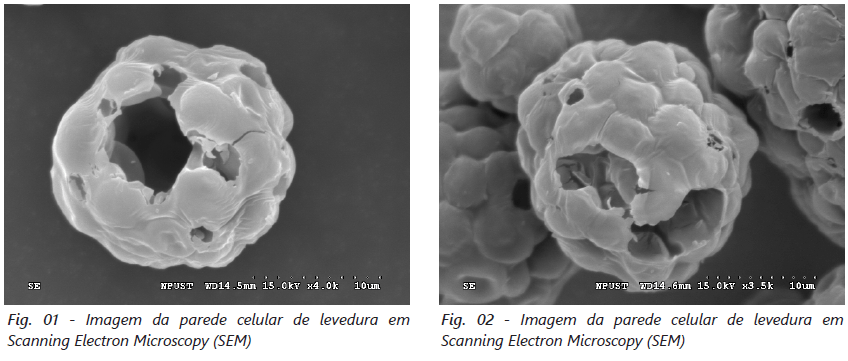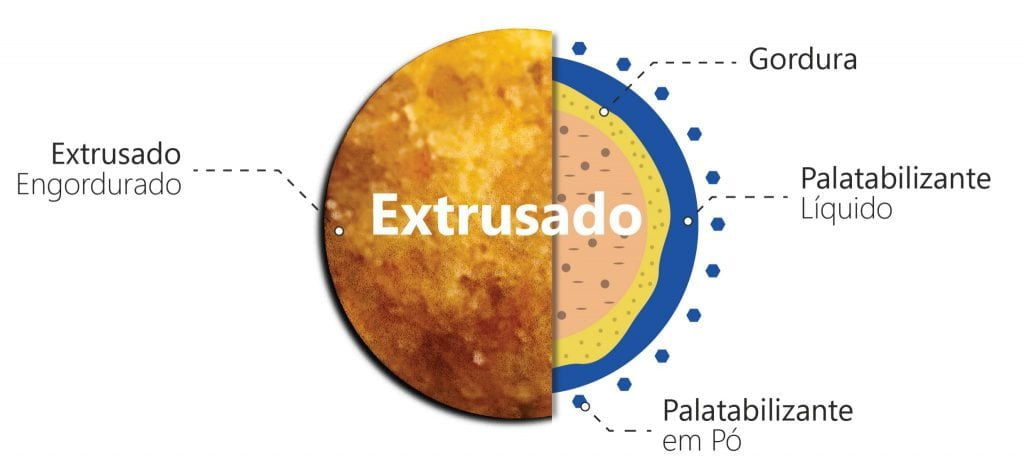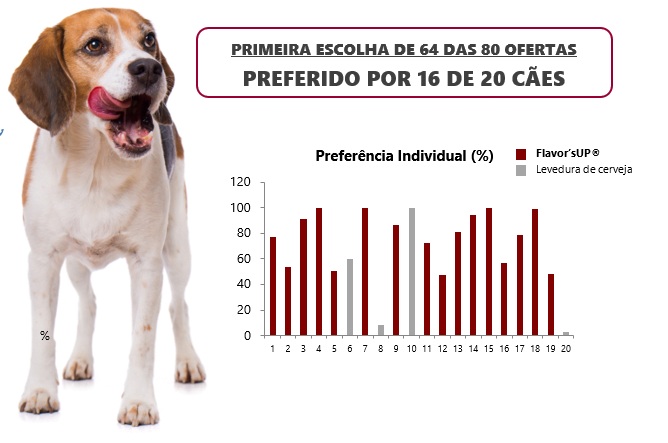ImmunoWall® as a modulator additive and Flavor’sUP® to increase palatability – this duo will strengthen the immune system for dogs and cats.
ImmunoWall® is produced from the fermentation of sugarcane for ethanol production. In this process, yeast cells go through countless fermentation cycles, which makes the cell wall thicker and stronger, thus resulting in high quantities of functional carbohydrates and less fat content in their composition, being less digestible in the gastrointestinal tract. This aggressive fermentation process provides the product with a high ratio of β-glucans: MOS.
Yeasts are unicellular organisms composed of an outer layer (cell wall) and a protein cytoplasm inside them. Put, we may affirm that cell wall and yeast cytoplasm segregation is achieved by an autolysis process followed by centrifugation.
The Saccharomyces cerevisiae yeast cell wall is composed of highly purified functional fibers, obtained from the sugarcane fermentation process for ethanol production.
The key elements of the yeast cell wall are mainly composed of functional carbohydrates, such as mannan oligosaccharides (MOS) and β-glucans.
The importance and function of MOS are mainly linked to the binding of some pathogenic bacteria commonly found in the digestive system of animals.
Throughout the autolysis process, some “holes” appear in the cell wall (Fig. 01 and 02). These “holes” become ideal binding sites for bacteria that have type 1 fimbriae. At this moment, gram-negative bacteria do not adhere to the surface of intestinal cells. This mechanism occurs thanks to the particular constitution of this group of bacteria, which have residues of D-mannose in their fimbriae. Pathogens with mannose-specific type 1 fimbriae bind to MOS readily and are eliminated along with feces (BASSAN et al., 2008).

Fig. 01 – Picture of the yeast cell wall under Scanning Electron Microscopy (SEM)
Fig. 02 – Picture of the yeast cell wall under Scanning Electron Microscopy (SEM)
β-glucans are structural polysaccharides of the cell wall of yeast, fungi, and some cereals. We can tell them apart according to the type of binding between the glucose units of the main chain and the branches that connect to that chain.
The action of β-glucans is associated with increased immunological activity and adsorption of polar, nonpolar, and bipolar mycotoxins through interactions by hydrogen bonds and Van der Waals, which are subsequently eliminated.
The percentage and types of β-glucans are of great importance to evaluate the immune activation capacity.

Supplementing diets of dogs and cats with β-glucans are key in some critical and more susceptible periods, such as after weaning and at old age. During pregnancy, only a small amount of immunoglobulin G is transferred to offspring in utero. So, providing adequate amounts of colostrum and milk is important. Both dogs and cats colostrum is rich in IgG.
Between the 4th and12th weeks, offspring go through a critical period. Immunity transferred through colostrum gradually decreases, until it reaches an almost undetectable level, after the 4th week. This period is called the “immunity gap”.
Flavor’sUp® – Palatability and digestibility walk side by side
Food fed to pets is highly nutritious and should be pleasing to their taste buds. For this reason, using ingredients to enhance flavor and stimulate smell is key for animal feeding, since they improve product standardization and sensory features of food.
There are several benefits from using these ingredients, such as the satisfaction and pleasure of eating attractive food, stimulating consumption.
Flavor’sUp® derives from a complete autolysis process, in which the cellular content of yeast is isolated and endogenous enzymes break down protein chains into peptides and amino acids, thus providing a soluble flavor, enhancing the product. Flavor’sUp® is rich in glutamic acid, B vitamins, purines, and pyrimidines.

[Key:]
Extruded
Greasy extruded
Grease
Liquid palatability agent
Powder palatability agent
In the Food Preference Test, carried out for 4 days, when Flavor’sUp® was used as a flavor enhancer in feed for Beagles, average intake was 243% above average intake of feed with brewer’s yeast.

[Key:]
The first choice of 64 out of 80 offers.
It is liked by 16 out of 20 dogs.
Individual preference (%)
Flavor’sUp®
Brewer’s yeast
***Research conducted at Kennelwood Inc, USA, 2019.
Posted in 06 August of 2019


